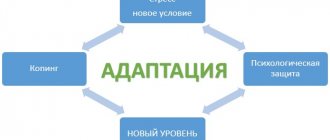The interaction of people with each other is mainly their communication. And communication, in turn, is a very complex process, which is characterized by its own laws and rules, and, depending on each individual situation, they can change. However, there are some things that can be called universal and suitable for any communication. Such things include, for example, the rules of negotiations, non-verbal means of communication, the ability not to succumb to provocations and some others. But today we will talk specifically about working with objections.
Objections are found everywhere in our lives: in conversations with family, in discussions with friends, when communicating with work colleagues. The central place for objections is given in the field of sales, because It is in the art of selling something that one can directly trace a person’s ability to understand the position of another person, but skillfully present his/her product or service, show his/her benefits and advantages, and complete the transaction. And customer objections are a real stumbling block for many sellers around the world. To date, thousands of books, brochures and articles have been written on the topic of handling objections; Trainings, educational seminars and master classes are conducted.
We do not claim to be a full-fledged study of the magic of sales and to provide comprehensive information on the presented topic, but we want to introduce you to several rules and stages of handling objections that you can apply and follow in your daily life. This information will undoubtedly be useful both to people whose activities are related to sales, and to people of completely different professions, and you can use it at work, in everyday life, and at home.
Why does the client object?
There are several reasons:
- The client is not satisfied with the price. This is perhaps the most logical objection: if a product is expensive, people tend to look for cheaper ones.
- The client loves to argue. There are such people: they want the last word to always remain with him.
- It is difficult for him to make a decision right away. You need to think carefully, consult with colleagues or superiors, and only then, perhaps, decide something.
- He's in a bad mood. You don't know what happened to him before he went to the online store website and started communicating with you. Maybe he had a fight with his wife. Or maybe he looked at the proposals of ten of your competitors, didn’t find anything suitable, and now he’s sure that you won’t get what he wants either.
And a lot of different reasons! The most important thing is to remember that clients are real people, they can be in a bad mood, have doubts, and be capricious. The task of a good seller is to be a psychologist, to guess the client’s pain and gently push through his position.
First step: listen
At this step we are silent for now. We remain silent and listen. Moreover, it is important that the interlocutor feels from you that you take his point of view seriously. Even if he is wrong in your understanding.
This uses the active listening technique. In direct contact, these are head nods, eye contact and supportive interjections; in a telephone dialogue - only the latter.
Let the potential client speak - then answer yourself.
Yes, we listened. Then you need to speak for yourself. What shall we say? What is the client doing wrong? Let's do it differently.
Stages of handling objections
- Listen to the client. No matter what he says, no matter how tiresome, the salesperson’s job is to hear his true needs between the lines. There is no need to interrupt, rush to sell quickly - you will still have time.
- Listen - comprehend and understand. Break the system: let the client consider you not a soulless machine, for which the main thing is the sales plan, but a living person who can understand it.
- Got it - talk to him. Together, figure out the situation, discuss what to do (for example, if it’s too expensive, offer similar products, the opportunity to buy on credit, give a small discount). Don’t chatter like a crazy parrot, invite the client to a dialogue - let him offer a solution to the problem.
- Give a counter-argument. And when, during the conversation, the client’s true pain comes up, say the very word that will make the person think and change his decision, and place an order.
- Make sure the problem is resolved. To do this, check if the client still has any questions. If yes, start all over again.
Examples of raising objections in an online store
Let's move on to specifics - let's look at how to answer common objections using examples.
Yours is very expensive!
- What amount were you expecting? Let's choose a cheaper option that is not inferior in quality.
Or:
- I understand, but if you divide this amount by a year, you get only 1000 rubles per month! Is it expensive?
Or:
- We have average prices for the market. Look: for competitors X this product costs so much, for Y it costs so much. You simply won't find a cheaper option.
Or (for the VIP segment):
- You know, this price is justified. In return, we offer you excellent quality (you tell us about the characteristics of the product, the benefits for the client), pleasant bonuses (VIP card, club membership, free training materials, etc.).
Competitors are cheaper!
- You know, to be honest, yes. But they have a number of pitfalls: paid delivery, lack of discounts. As a result, the total cost will be even higher.
- I agree, cheaper. But why do you think that we have the same products? They have China, we have a European manufacturer. Of course, prices vary.
I need to think
- It's good that you want to properly weigh the pros and cons. But I must warn you, the offer is valid for only 3 more days, then the promotion will end.
- Yes, sure. Let me help you? What other product characteristics would you like to know about?
- Yes, sure. What exactly are you thinking about? I can tell you what confuses you.
- I understand you, we need to think about this. I also advise you to think about... (name the most advantageous characteristics of the product in order to once again concentrate attention on them).
I like everything, but the price is too high for me
- Thanks for being straight forward! Let's think about what can be done. We have the opportunity to buy on credit, and discounts are provided for regular customers.
- Okay, tell me, what price are you expecting? How much did you plan to spend? (based on the stated amount, select the product).
I didn't like your products
- Thanks for your honesty! But let's figure out what exactly you don't like?
- I understand you, it’s difficult to choose. Tell me, what products do you like? What do you pay special attention to (here you can again bring the conversation to the main advantages and characteristics of the product)?
- Okay, how about we send you a free sample of the product? If you don't like it, then we apologize.
- It’s a pity... So you won’t appreciate our new product - an absolute hit in the city of M. (region)...
I don't have time right now, we'll talk later
- OK, thank you. Can't you find even one minute? I won't take up much of your time.
- Okay, when is it convenient for you to call (write)? Tell me the time, I will definitely call (write) back.
Thanks, I'm just watching for now
- I am very glad that you are looking at our products! Would you like me to tell you about...? It will only take one minute.
- Great! What products are you interested in? We now have discounts on... (name sale categories).
- Great! Pay special attention to…
I don't need it yet. Maybe later…
- Okay, I got you! What will happen then, reveal the secret?

- Thanks for the answer! Check out our other options - maybe they will come in handy right now.
- Thanks for the answer! Of course, feel free to contact us any time! In the meantime, just check out all the cool items we have in stock right now!
Fourth step: check for truth
The client has the right not to disclose or hide from you the true reason for the objection. Our task at this step is to determine it. So, what methods of checking for truth exist:
| Question formulation | Explanation |
| “Do I understand correctly, if..., then we will cooperate?” | In place of the three dots we put the wording from the third step. The client answers “yes”: the reason is true. |
| “If the issue with ... is resolved, will we be able to start work?” | The point here is in the wording. Agree that it is easier to solve an issue than a problem. The client answers “yes”: the reason is true. |
| “It’s just a matter of...?” | In place of the dots, we voice the essence of the objection. The client answers “yes”: the reason is true. |
| “Which is your priority, 1 or 2?” | The first option is an interpretation of the original objection. The second is what we came to during the third step. What the interlocutor names first is true. |
| “Let’s say we resolve the issue with.... What's our next step? | In place of the three dots we put the wording from the third step. Again, everything is included in the wording, we are already laying down the idea that we will cooperate: “we will decide”, “ours”. The client talks about the next step - which means the reason is true. |
In practice, there are many types of truth checks - from switching to another topic in a conversation to replacing the wording of an objection with one that is convenient for oneself.
[Webinar recording] How to build strong relationships with clients: rules identified over 7 years
Returning to our case, how would we test the objection for truth?
“What is your priority: meeting the price or getting quality articles that will bring targeted traffic?”, where:
- “meet the price” - an interpretation of the initial objection “no, well, it’s expensive”;
- “get high-quality articles that will bring targeted traffic” - obtained data from the third step.
So our client told us, “Uh, quality and traffic.” And it all started with “no, well, it’s expensive,” but here you can completely forget about it.
Wow, what to do next?
Psychological techniques for removing objections
All people are different - some need to prove something using logic, others need to influence emotions, others need to listen carefully and assent.
The “Thank you for the day, thank you for the night...” method
Thank you for everything: for contacting the online store itself, for the desire to deeply understand the issue, for the speed of decision-making. Praise is pleasant even for a cat, and even more so for a person.
— I haven’t decided yet, I think.
— How nice it is to meet a person who wants to deeply understand the subject!
Or:
— I read negative things about you on the Internet.
— Thank you for studying information about us!
The “I understand you” method
Empathize. What we have already talked about: a sincerely spoken “I understand you” can melt the ice of even the roughest heart and make any standard conversation personal and friendly.
— I don’t have money now.
- I understand you, I myself am in such a situation. Let us think about what can be done? We have the possibility of credit, installment plans, discounts...
“Ask a question” method
Get into it. Constantly ask, clarify, summarize. Force the client not to listen to your monologue, but to participate in the dialogue himself. Questions asked at the right time make the client think.
- Yours is expensive.
- And compared to whom?
Or:
— How much is inexpensive for you?
Or:
— That’s right, it’s expensive, but thousands of people order from us. Why do you think they won’t work at a loss?
“Offer a benefit” method
This is a classic of the genre: don’t lavish praise on the store—show how your benefits will help the buyer . What will he get, what will be his benefit? These are the so-called “you” statements, which need to replace conversations about yourself (“I” statements).
- You have little choice.
- Yes, there is such a thing. But all our goods are handmade. You will receive a unique dress that no one else will have. We will also deliver it directly to your home so you can try it on in your usual environment.
The “Yes, but...” method
You seem to agree with the client, admit that he is right, but at the same time gently insist on your own . For example:
- Oh, yours is so expensive!
— Yes, it’s expensive, but we offer excellent quality and environmentally friendly materials.
Or:
— Competitors have lower prices.
- Yes, but they don't have our advantages. We offer free shipping, discounts and promotions, and souvenirs as gifts.
Or:
— I read bad reviews about you on the Internet.
— Yes, but you noticed: there are many more good reviews, people trust us!
The “That’s why...” method
This is how you can answer any objection. You do not argue with the client, do not prove him wrong - you turn his words in your favor. In principle, this technique can be called clever manipulation, but that is why it works. And then, we won’t tell anyone about this!
- Yours is very expensive.
“That’s why I want to send you a sample of the product - so that you can make sure that the price corresponds to the quality.”
Or:
“I don’t have time to talk now.”
“That’s why I wanted to ask you to leave your contact information: phone or email. I will contact you at any time convenient for you.
Or:
— You have paid delivery, I’m not happy with that.
“That’s why we have a lot of other advantages: low prices, the possibility of installments, excellent quality.
Method “Clarification”
You repeat the client’s words, clarifying and asking again. Correct phrase: “I understood you correctly, do you want...?” This way the client will understand that he is being listened to and will be more loyal. There is also a more cunning trick: by repeating, you leave the essence of the client’s phrase, but change the message - to one that is more beneficial to you.
- Yours is expensive.
— Do I understand correctly, if we make a discount, you will buy the product?
Or:
- Talk later. Some day.
- So you agree that I will call you back and we will talk in more detail?
Method “Herd instinct”
It's corny, but it works! Casually tell the client that this particular product is now at the peak of fashion, everyone takes it and cannot get enough of it. Give numbers to convince him even more. For example, “We ordered a large batch of toys - 10,000 pieces, but 8,000 have already been sold out.” Report customer reviews or provide a link to them (if any): “In general, they say that the toys are good, durable, do not break or get dirty.”
Method “Pain points”
As a rule, all purchases are based on three emotions: fear, greed and vanity. Let’s take the common advertisement “Loreal: you deserve it!” This is vanity in its purest form, plus the fear of growing old. The standard call “Hurry up, there are only 3 days left until the end of the sale!” - also from this opera. Here the emphasis is on greed (the sale will end and I won’t get anything) and fear (again being late and not having time to save). There are several combinations of these pain points - try them all. Here's what it looks like in an example:
— I don’t have money now.
- Oh, what a pity! There are only three of these dresses left, they are sold out very quickly.
Or:
— This smartphone is much cheaper from competitors.
- Much? This is a dangerous sign. You don't want to buy a fake, do you?
What should you not do?
And finally, let’s look at the main mistakes when working with objections:
- Argue with the client, argue, point out that he is wrong. We won’t even comment - it’s strictly prohibited, period.
- Imposing your opinion. There is a fine line here: you need to listen to the buyer, and at the same time push your position. The psychological techniques described above will help with this.
- Turn dialogue into a monologue, a one-man show. Many salespeople are so carried away by describing the product that they completely forget about the client.
- On the contrary, show your incompetence, find it difficult to answer, mumble and bleat “I don’t know”, “I need to clarify”, “I’ll ask the authorities...” There will be no trust in such a seller.
- Do not think about the client at all, consider him as a tool, a means for fulfilling the sales plan. Meanwhile, we have said more than once: you need to understand the client, guess his desires and pains. And if you can’t guess, ask directly.
- Be afraid to answer objections and agree with every word the client says. This mistake is often made by inexperienced beginners who are afraid of seeming too intrusive. With experience, all these fears go away.
- Thinking that an objection is a refusal. No, guys, a refusal is a firm “no,” but you can even try to correct it.
Of course, all this comes with experience. You need constant sales practice, but you shouldn’t forget about theory. Constantly train employees, conduct trainings and master classes, send them to seminars and conferences. Good luck with your promotion!
Fifth step: argue
Argumentation is a response to a true objection with the goal of stopping a person from taking the target action.
The ability to justify your decision to a potential client is a special skill. Considering that the “client-performer” hierarchy is gradually dying.
This step combines two points. The first is your knowledge of your product, the second is the ability to present it. Here we will focus on the second.
As a rule, when the question arises: “How to handle such and such an objection?”, what is meant is the “Argumentation” item. What happens if you start arguing immediately after receiving an objection? Dispute. In a dispute, the truth is born, but not the result.
Since we are a content agency, the manager needs to understand this matter at least above average.
What are the ways to present an argument? Let's look at a few options:
- SSV – property, bundle, benefit., where property is any product property that will help resolve the objection; connective – a phrase that connects a property and a benefit; benefit – the answer to the question “what will the client get from using the property.”
- An axiom question is a question tied to a general value to which a person will definitely answer “yes” (if taken out of context, the answer will remain the same).
- Metaphor – comparing a benefit with something to create an image in the client’s head.
- A parallel example is a retelling of another client’s case with a similar objection.
Now let's move on to practice and look at a specific example.
We realized that the client needs, first of all, the quality of articles and traffic.
| Method of argument | “The quality of articles and traffic are important” |
| NNE (shows the benefits for the client from our product) | Working according to clear KPIs will allow you to be confident that articles will be published on time and bring targeted traffic. |
| SSV + axiom question (agreeing with an axiom question, a person automatically agrees with what was said before) | Working according to clear KPIs will allow you to be confident that articles will be published on time and bring targeted traffic. Agree, it is important to keep your business under control, right? |
| SSV + metaphor (suitable for clients who are poorly competent in the matter) | Working according to clear KPIs will allow you to be confident that articles will be published on time and bring targeted traffic. It's like watching a house being built in fast motion. |
| Parallel example (it’s better to voice it if it really happened) | Yes, we also had experience when, with a limited budget, we managed to bring new customers to a client through articles. |
To close an objection, it is enough to use 2-3 arguments specifically for the true reason for the objection. The ideal argument structure looks like this:
- SSV;
- Announcing the cost;
- SSV + axiom question;
- Close to target action.
In practice, everything is more complicated. By the way, we are already at the finish line.
An example from the practice of the TexTerra sales department. Objection: “You have no experience working in my field, and it is not entirely clear from what you conclude that I need a budget of 200 thousand.”
Answer: “The lack or presence of experience in a certain topic is not really a 100% measure of whether a company will cope with the task of successful promotion.
In the absence of experience in a certain topic, knowledge of tools for promoting projects through a certain channel, the ability to immerse yourself in the customer’s business and his willingness to provide his knowledge play an important role. This will allow the performer to increase his expertise.
If you have experience in a certain field, you should remember that each project has its own characteristics and its own history on the Internet. It is impossible to predict the result for two different projects in the same topic, since much depends on the region of promotion, on the state of the project, on the history of promotion, on competitors in this region, etc. Therefore, at the current stage, we can make a preliminary forecast of the size of the required budget for successful promotion of your project. We make a forecast based on our experience and your goals.”











